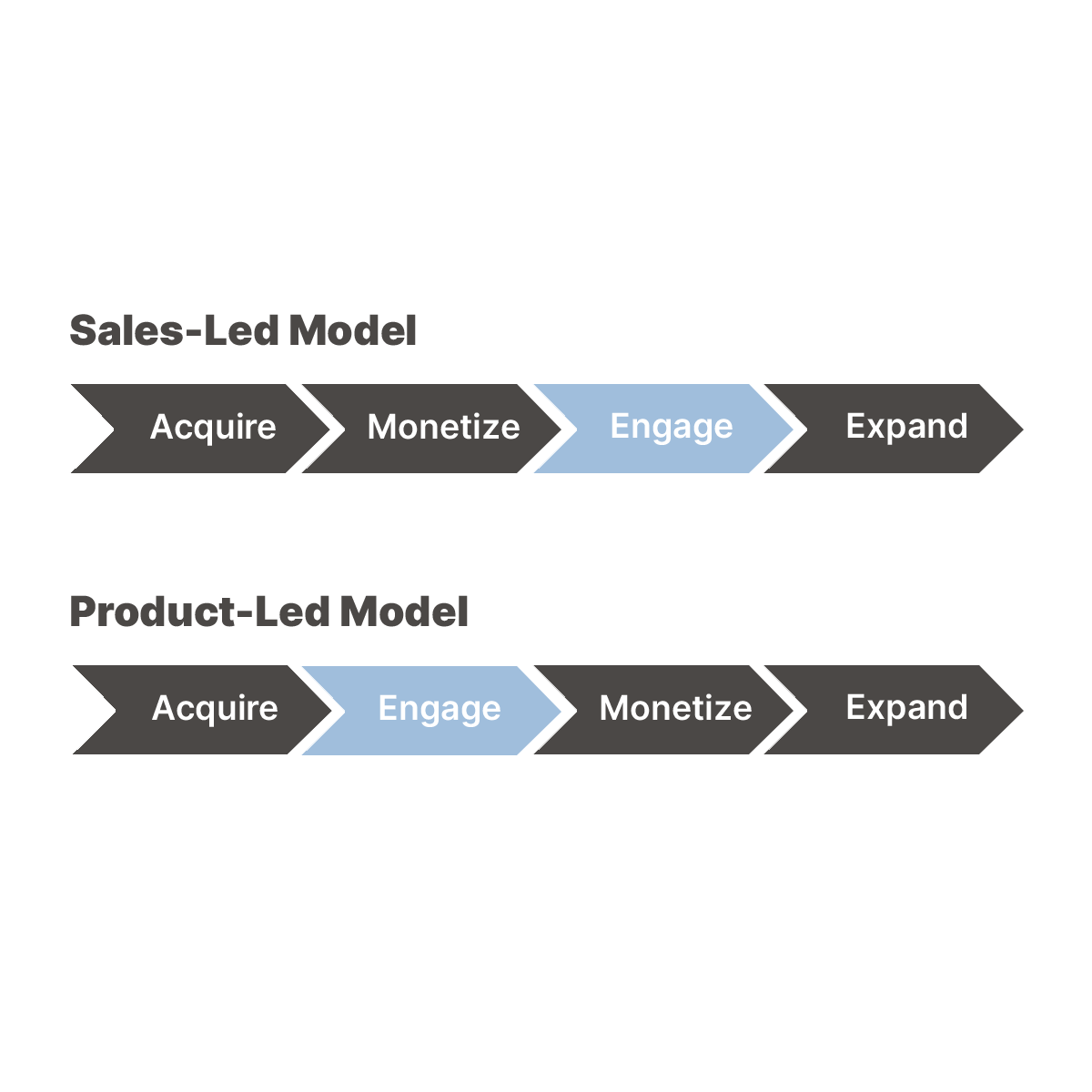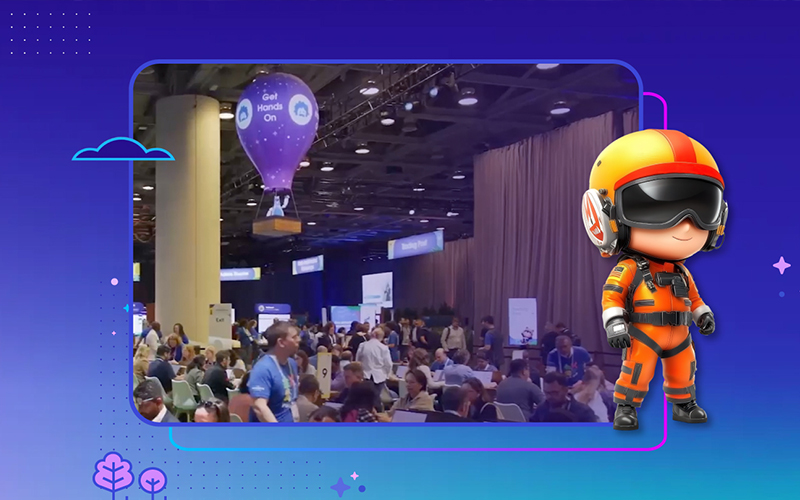
We’ve all seen the rocket-fuel growth of product unicorns like Slack, Dropbox, Zoom, and Atlassian. But what makes these SaaS giants so successful? These enterprises have built thriving customer communities and champions by focusing on user delight and value. The major differentiator is their Product Led Growth (PLG) strategy which uses the product as the driving force for customer acquisition, expansion, and retention instead of large sales and marketing-driven revenue generation.
What is Product Led Growth?
PLG often employs a freemium model through either trials or limited-use versions that provide immediate value to users at a small scale first. Revenue comes from premium upgrades to unlock additional features or when a customer reaches a threshold of scale in the utilization or users in their organization.
This approach has become popular with SaaS companies because it can radically reduce the cost of sales, and it recognizes the value of the “long tail” of subscription services for long-term growth and success.
Enterprise Adoption of PLG
Enterprises across all industries are keen to tap into this type of success for their products but often use a completely different growth model—Sales Led Growth (SLG). Yet enterprises that want to build a PLG product arm don’t have to abandon their existing SLG model and start from scratch.
Many of our enterprise clients want to learn how to adopt PLG strategies for new products, which requires different ways of thinking, planning, and executing from the beginning. It’s possible to pursue a hybrid model to take advantage of sunk costs in sales and marketing departments while also seeking the long-term benefits of PLG.
Top Tips for Adopting PLG into an SLG Model
Here are the top tips from our product development experts on how your organization can adopt and incorporate a PLG strategy into its existing SLG model.
Shift Your Product Design Philosophy
PLG requires a shift in product design philosophy. Get to know your users deeply and design your early product versions as though the end users are paying for it. Understand their real-world pain points, and iterate rapidly to enhance the product based on their feedback. The product should be intuitive, with minimal setup and training required. It should also give the customer real, measurable value from the first use.
This is a change from most enterprise product offerings, which focus more on high-level business outcomes that take time to realize. The product can still have a big vision and grand business goals, but those will follow user adoption. Initially, users drive PLG product growth, and the C-suite comes in later.
At CodeScience, this is a big part of the initial Salesforce product strategy and discovery engagement with our enterprise clients. Decide early in the process whether this strategy fits your long term objectives because it requires a commitment to follow through, and it changes a lot about what comes next.
Stakeholder Buy-in
Changing your product design philosophy also means changing R&D budgeting allocations, the product roadmap, and revenue projections. To successfully manage those changes and execute a PLG strategy, you must have stakeholder buy-in across all departments and set the right expectations. Your MVP will focus on delighting end users and the freemium or trial strategy rather than feature parity with some competitive offering or legacy product. You’ll need to budget for an agile approach to rapidly iterate releases based on user feedback. Product launch and release management should align closely with your PLG strategy and decisions.
Embrace Self-Service
Invest in self-service to transform users into champions. Self-service begins with initial sign-up and purchasing and includes onboarding, knowledge bases and videos, support, virtual agents, user groups, and community forums. Early adopters feel invested when they make things happen and can support others in finding solutions. Enable that, and your customers become evangelists, both internally and externally. Use automation for purchases, basic account management, and upgrades to create a self-sustaining product operations system that can be scaled quickly when you find your ideal product market fit.
Start Small & Analyze Your User Data
Enterprise product companies often want to make a big splash with a new product, but PLG typically means starting small. Accounts are won and grown from the ground up, which may take some time. This approach is effectively like an extended sales cycle that works to your advantage by developing user champions in parallel to your efforts to satisfy the requirements of organization-wide adoption, such as compliance, support, and proof of value through metrics.
Businesses can analyze customer data to understand where the product is providing value and areas that need improvement. Feature usage metrics are critical to determining what will delight your users, what will make the business case to your customer stakeholders, and where you should invest in product enhancements for the most significant impact on the product business. And not only will those user metrics be critical for scaling with larger customers, but they are also the foundation of PLG product management decisions.
After a CodeScience client releases a new product, they often stay engaged with our Managed Services group, who both support the product and also assist with interpreting user feedback to decide how to enhance the product and evolve the roadmap. As Salesforce ecosystem experts, we can provide the specialized user insights needed to contextualize their feedback and recommend the best approach.
Users want to feel in control and invested—not just have tools forced on them. PLG requires deeply understanding your users’ daily pains and investing in regular product enhancements to turn them into your champions.
SLG with a PLG Overlay
A hybrid approach can be a great model for pursuing the SMB and Enterprise markets. PLG can make SMB customers a viable segment because the self-service model reduces acquisition costs without devaluing your product. On the flip side, SLG assets can overcome barriers to entry for Enterprise customers, and PLG can support adoption and internal championing that drives retention and expansion throughout large enterprises.
How to Move Forward with PLG on Salesforce
PLG strategies require different ways of thinking, planning, and executing from the very beginning for a new product. When developing on a platform like Salesforce, you need an expert partner to deeply understand the user and help turn them into champions. At CodeScience, we help enterprises develop user-centric products with features and offerings designed with PLG principles in mind, even if your go-to-market plan includes SLG strategies. This approach will ensure you can keep evolving and enhancing your product rapidly after your initial launch based on user feedback—and CodeScience will be there to advise you every step of the way. Want to learn more, let’s talk.


